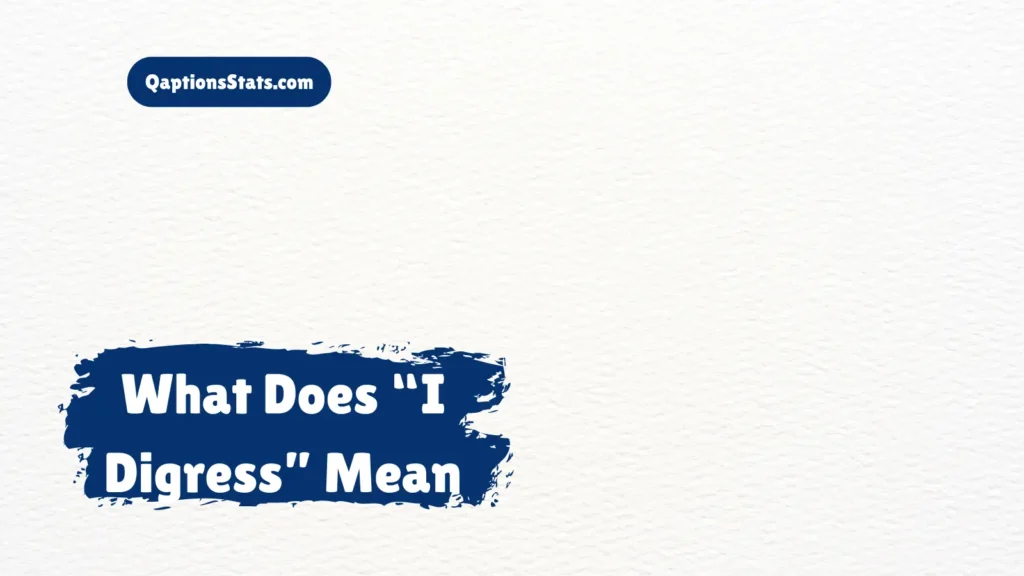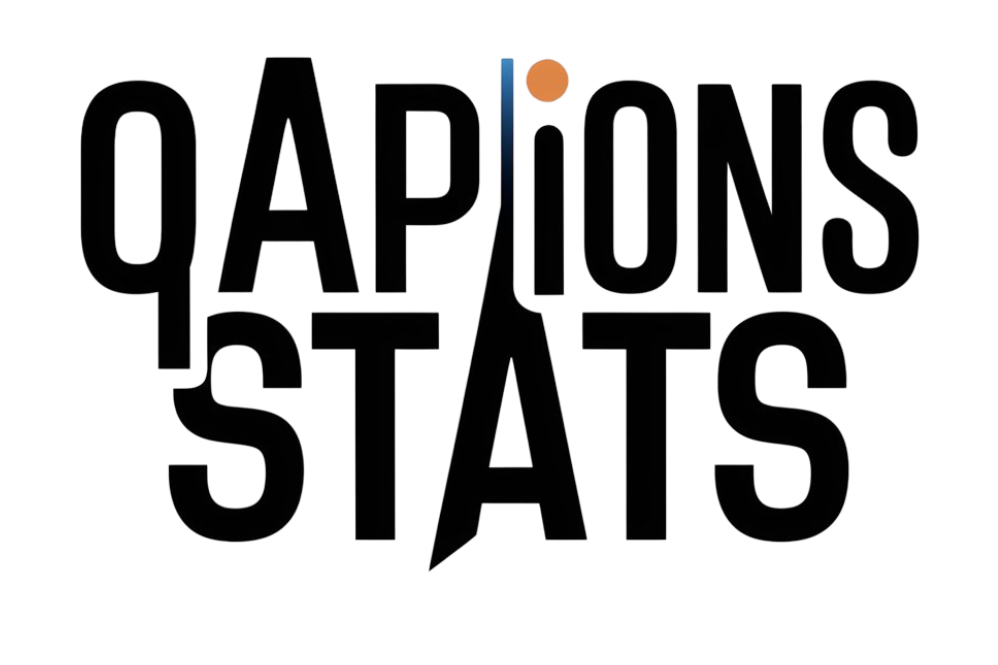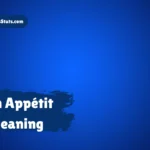When you’re engaged in a conversation or writing, sometimes your thoughts wander away from the main topic. At that moment, you might hear or say, “I digress.” But what does this phrase really mean? How and when should it be used? And what alternatives can you use in different contexts to convey the same idea politely and professionally? This article will explore the meaning of “I digress,” its origins, nuances, and many alternatives suited to various tones and situations, from formal to casual.
What Does “I Digress” Mean?

The phrase “I digress” is a polite and somewhat formal way of acknowledging that you have temporarily strayed from the main topic of discussion. It means you recognize you have wandered off the point and are signaling to your listener or reader that you are returning to the original subject.
Digress itself is a verb derived from Latin digressus, meaning “to go apart” or “to deviate.” When someone says, “I digress,” they are admitting they have momentarily deviated from the central theme or argument.
Related post: Abracadabra Meaning & Modern Alternatives for Every Tone
Hiatus Meaning of “I Digress”
To clarify, hiatus means a pause or break in continuity. When you digress, you create a kind of verbal hiatus — a temporary break or detour — from your main line of thought or narrative. The phrase essentially signals this small “hiatus” and shows awareness of it.
Think of it as a courteous verbal or written pause, letting others know you are aware of your deviation and intend to get back on track.
How Is “I Digress” Used in Text and Speech?
You’ll often see “I digress” used in speeches, essays, blog posts, or casual conversations. It acts as a subtle cue that the speaker or writer is aware they have taken a slight detour but is now bringing the focus back.
Examples:
- Speech: “We’ve talked a lot about the new policy and its benefits. I digress, let me return to the main issue of funding.”
- Writing: “The novel explores themes of loss and identity. I digress; this essay focuses on the author’s use of symbolism.”
- Casual: “Oh, I digress! Back to what we were saying about the trip.”
The phrase helps maintain coherence and keeps the listener or reader oriented.
Related post: HBU Meaning: Understanding “hbu” and Polite Alternatives for Any Conversation
The Tone and Nuance of “I Digress”
Using “I digress” often carries a tone of humility and self-awareness. It is a gentle way to admit that you have temporarily strayed without losing your authority or focus. It suggests that you respect your audience’s time and attention.
However, “I digress” tends to sound formal or literary. In casual conversations, it might come off as slightly pretentious if overused. So, knowing your audience is key.
Polite, Professional, and Casual Alternatives to “I Digress”
While “I digress” is useful, there are many alternatives that fit different levels of formality and tone. Below are categories and examples of alternatives, along with explanations on when to use each.
Polite and Professional Alternatives
These alternatives are suitable for formal writing, presentations, business communication, or academic contexts.
- “That aside,”
- Use when you want to briefly acknowledge the digression and quickly return to the topic.
- Example: “That aside, let’s focus on the quarterly sales figures.”
- Use when you want to briefly acknowledge the digression and quickly return to the topic.
- “Returning to the point,”
- Formal and clear, signaling a shift back to the main subject.
- Example: “Returning to the point, our primary objective is to increase customer retention.”
- Formal and clear, signaling a shift back to the main subject.
- “To get back on track,”
- Polite and commonly used in meetings or presentations.
- Example: “To get back on track, we should review the project timeline.”
- Polite and commonly used in meetings or presentations.
- “As I was saying,”
- A natural and professional way to continue after a side comment.
- Example: “As I was saying, the new policy will improve efficiency.”
- A natural and professional way to continue after a side comment.
- “Let me circle back,”
- Slightly conversational but still professional, often used in business contexts.
- Example: “Let me circle back to the budget proposal.”
- Slightly conversational but still professional, often used in business contexts.
Read also: LMR Meaning (Hiatus Meaning)
Casual and Conversational Alternatives
These fit everyday conversations, informal writing, and friendly chats.
- “Anyway,”
- A very common, casual way to redirect a conversation back.
- Example: “Anyway, as I was saying, the movie was fantastic.”
- A very common, casual way to redirect a conversation back.
- “Back to what I was saying,”
- Simple and easy-going, great for informal talks.
- Example: “Back to what I was saying, we should try that new restaurant.”
- Simple and easy-going, great for informal talks.
- “Getting back to the topic,”
- Casual but clear, often used in informal emails or chats.
- Example: “Getting back to the topic, when is the deadline?”
- Casual but clear, often used in informal emails or chats.
- “Where was I?”
- A playful way to admit you lost your train of thought but want to continue.
- Example: “Where was I? Oh yes, the plan for next week.”
- A playful way to admit you lost your train of thought but want to continue.
- “Moving on,”
- Can be casual or semi-formal, used to transition smoothly.
- Example: “Moving on, let’s discuss the next agenda item.”
- Can be casual or semi-formal, used to transition smoothly.
Neutral and Versatile Alternative
- “That reminds me,”
- This phrase works well when your digression is somewhat related and you want to smoothly link it back.
- Example: “That reminds me, we should double-check the client’s preferences.”
- This phrase works well when your digression is somewhat related and you want to smoothly link it back.
How to Choose the Best Alternative Depending on Context
Choosing the right alternative depends heavily on the situation, audience, and tone you want to convey.
- Formal Writing or Presentations: Stick to “Returning to the point,” “That aside,” or “To get back on track.” These convey professionalism and respect for the audience’s attention.
- Business Meetings or Emails: “Let me circle back,” or “As I was saying” are friendly but still polished choices.
- Casual Conversations or Informal Writing: “Anyway,” “Back to what I was saying,” and “Where was I?” keep the tone light and natural.
- When Making a Smooth Connection: “That reminds me” is great when your digression is relevant and you want to link ideas seamlessly.
Why Use These Alternatives?
Using alternatives to “I digress” can help you:
- Avoid sounding repetitive or overly formal in casual settings.
- Match your tone perfectly with your audience.
- Keep your communication fresh and engaging.
- Clearly signal topic shifts without confusion.
- Maintain clarity and coherence in your message.
Eleven Clear Examples in Context
To help you see these alternatives in action, here are eleven examples, each using a different polite or casual way to indicate digression:
- “That aside, we need to focus on improving customer satisfaction.”
(Professional, business meeting) - “Returning to the point, our marketing strategy will include social media campaigns.”
(Formal presentation) - “To get back on track, let’s review the quarterly reports.”
(Corporate email) - “As I was saying, the new regulations will affect small businesses.”
(Academic lecture) - “Let me circle back to the budget concerns.”
(Business discussion) - “Anyway, the concert last night was amazing!”
(Casual chat) - “Back to what I was saying, we should book our flights early.”
(Friendly conversation) - “Getting back to the topic, when is the project deadline?”
(Informal email) - “Where was I? Oh right, the new product launch.”
(Casual storytelling) - “Moving on, let’s discuss the next agenda item.”
(Meeting facilitation) - “That reminds me, did you get the email from the client?”
(Conversational, linking related topics)
Final Thoughts
Understanding the phrase “I digress” and knowing when and how to use it — along with appropriate alternatives — can significantly improve your communication skills. Whether you’re writing a formal report, delivering a speech, or chatting with friends, having the right phrase to gently acknowledge a sidetrack helps maintain clarity and respect for your audience’s attention.
Remember, the key is to match the tone to your audience and situation. Use formal alternatives in professional settings and keep it casual and natural with friends. This nuanced approach will make your conversations and writing more polished, effective, and enjoyable.



